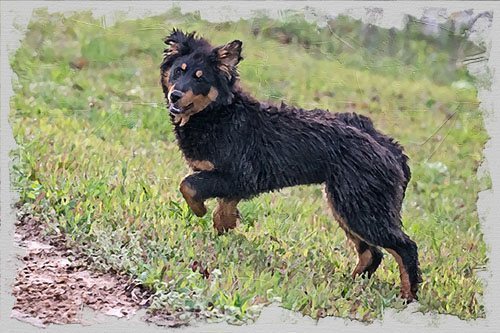Abstract
This article examines the role of the English Shepherd dog breed in the antebellum agriculture of the upper south region of the United States. We will focus on the various tasks these versatile farm dogs performed, including livestock management, crop protection, pest control, companionship, and hunting. The article highlights the indispensable contributions of the English Shepherd in the agricultural practices of the upper south during the antebellum period.
Introduction
The antebellum period, spanning from the late 18th century to the start of the Civil War in 1861, was marked by rapid expansion and growth in agriculture. The upper south, which encompasses states such as Maryland, Kentucky, Virginia, and North Carolina, was characterized by a mix of farming practices, including a focus on tobacco and hemp production. Among the various breeds of farm dogs, the English Shepherd stood out for its versatility and invaluable role in the agricultural landscape of the region.
Livestock Management
The English Shepherd excelled in herding and managing livestock, such as cattle, sheep, and pigs. These intelligent, agile, and hardworking dogs were integral in maintaining order during the seasonal grazing and movement of animals. Their keen herding instincts and adaptability to different tasks made them ideal for the diverse responsibilities of a farm dog.
Crop Protection
These dogs were also known for their protective nature, safeguarding livestock, crops, and farm properties from predators like wolves, foxes, and raccoons, as well as human thieves. The English Shepherd’s loyalty and alertness allowed them to be effective guardians of farm assets.
Pest Control
English Shepherds were proficient in controlling rodent populations that posed a threat to crops and food stores. With their strong prey drive and agility, these dogs efficiently hunted rats and mice, ensuring that the farm’s food supply remained safe from infestations.
Companionship
Farmers and their families often considered English Shepherds as part of the family, providing companionship and emotional support in the rural setting. These friendly and affectionate dogs helped to alleviate the isolation often experienced by farmers during the antebellum period.
Hunting
In addition to their farm duties, English Shepherds also contributed to hunting activities, which farmers in the upper south used to supplement their income or provide food for their families. With their keen sense of smell and tracking abilities, these dogs were valuable hunting companions, assisting in tracking and flushing out game like rabbits, squirrels, and birds.
Conclusion
The English Shepherd played a diverse and indispensable role in antebellum agriculture in the upper south. As versatile farm dogs, they contributed to the successful management of farms, provided emotional support, and assisted in hunting activities. Recognizing the importance of the English Shepherd in the agricultural practices of the upper south underscores the unique dynamics between humans and animals during this significant period in American history.
References:
- Gray, L. C. (1933). History of Agriculture in the Southern United States to 1860. Washington, D.C.: Carnegie Institution of Washington.
- Olmstead, A. L., & Rhode, P. W. (2008). Creating Abundance: Biological Innovation and American Agricultural Development. Cambridge University

